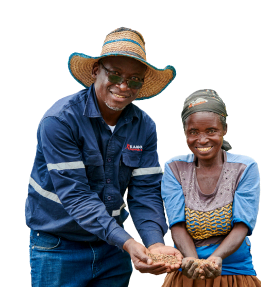
The Makoko-Kitoko copper discovery has grown substantially since its initial discovery in 2018. Ongoing exploration and drilling have transformed what began as a promising prospect into a significant mineralized district now extending over 13 kilometers—more than twice its original size.
A Rapidly Expanding District
Initial drilling confirmed copper-rich mineralization similar to that found in the Kamoa and Kakula orebodies. Subsequent exploration has linked the Makoko, Makoko West, and Kitoko areas into a single, extensive corridor of continuous mineralization, now called the Makoko District. The Makoko District now measures at least 13 kilometers in length and between 1,7 kilometres and 5,8 kilometres wide, with mineralization remaining open for further resource expansion.
Resource Estimates Highlight Scale and Potential
The latest resource estimate is based on 147 000 meters of drilling from 311 holes.
Les ressources indiquées totalisent 27,7 millions de tonnes à une teneur en cuivre de 2,79 %, contenant 773 000 tonnes (1,7 milliards de livres) de cuivre, sur la base d’une teneur de coupure de 1 % de cuivre. À une coupure plus élevée de 1,5 % de cuivre, les ressources indiquées totalisent 25,3 millions de tonnes à une teneur en cuivre de 2,93 %, contenant 741 000 tonnes (1,6 milliards de livres) de cuivre.
Les ressources inférées totalisent 494 millions de tonnes à une teneur en cuivre de 1,70 %, contenant 8,38 millions de tonnes (18,4 milliards de livres) de cuivre, sur la base d’une teneur de coupure de 1 % de cuivre. À une coupure plus élevée de 1,5 % de cuivre, les ressources inférées totalisent 221 millions de tonnes à une teneur en cuivre de 2,23 %, contenant 4,93 millions de tonnes (10,9 milliards de livres) de cuivre. These figures underscore the district’s substantial scale and prospective future growth.
The Western Forelands shelf, including Kamoa-Kakula, ranks as the world’s largest copper district discovered in at least the past two decades. Ivanhoe Mines will continue to advance drilling efforts in the Western Forelands over remainder of 2025 with drill results to be included in an updated Mineral Resource estimate in 2026.



 English
English Français
Français 日本語
日本語 中文
中文